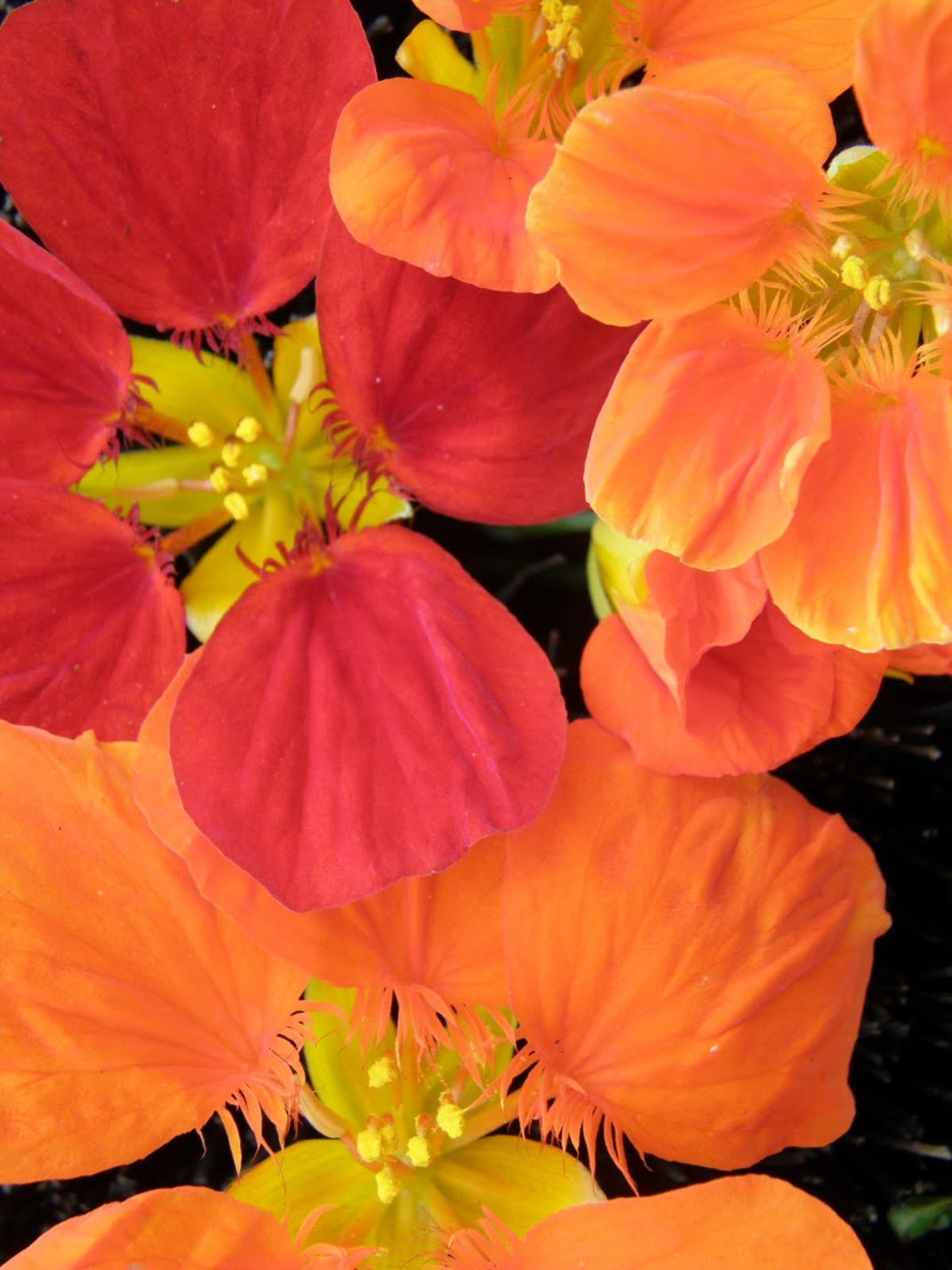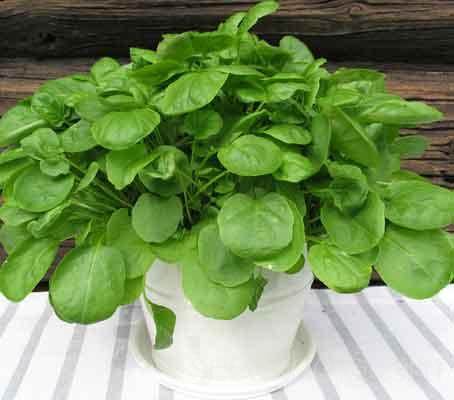 You know that sisterhood of peppery salad greens, arugula, watercress and nasturtiums? With the similar spicy taste? Completely different families.
You know that sisterhood of peppery salad greens, arugula, watercress and nasturtiums? With the similar spicy taste? Completely different families. Well, specifically, different genera; they are more like third cousins, twice removed. Just for confusion’s sake, Nasturtium is actually the genus name for Watercress (Nasturtium officinale) and only a common name for what we call nasturtiums (Tropaeolum species). “Nasturtium” is from the Latin Nasus tortus, twisted or wrinkled nose, no doubt a response to the pungent bite of the plants. Arugula (Eruca E. sativa) has this characteristic too. Climbing up the family tree, all three are related through the Order Brassicaceae whose members commonly produce mustard oil compounds (glucosinolates). This explains the whoo-ee factor, which you might not really experience unless you grow your own. By the way, glucosinolates are being studied for their cancer-preventing properties, so eat up.
Besides their distinctive peppery flavor and diluted mustard family ties, these plants share an easy cultivation habit. They can be started from seeds or plants. Harvesting the arugula and watercress repeatedly will stave off flowering, which can make the leaves too strong tasting. Nasturtiums and arugula are much less thirsty than watercress. Those of us in water-challenged areas with no burbling stream nearby should consider planting watercress in well-irrigated containers.
I sowed wild arugula from Seeds of Change more than ten years ago and still have clumps of it that return every year. How’s that for ROI? Unfortunately some are now at the edge of the street (how? I don’t know) at perfect dog height, which feels a bit dodgy when gathering it for dinner.
Most use arugula (or rocket, roquette, rucola) in salads. It’s also great in risotto, soup, pasta, chopped on top of pizza and as a pesto.
 The arugula flowers are edible too and taste great, but somehow they seem a little buggy-looking to me as a foodstuff. If I didn’t know what they were, I might be inclined to discretely pick them out of my salad & hide them in my napkin.
The arugula flowers are edible too and taste great, but somehow they seem a little buggy-looking to me as a foodstuff. If I didn’t know what they were, I might be inclined to discretely pick them out of my salad & hide them in my napkin. Nasturtiums are equally as persistent as arugula, though if you are planting unusually colored varieties, be prepared for the plants that re-assert themselves next year to look fairly different from the packet. They are a fun addition to your garden – with their big saucer leaves and surreal flowers, squint and you can just see the fairies living beneath…
Nasturtiums are equally as persistent as arugula, though if you are planting unusually colored varieties, be prepared for the plants that re-assert themselves next year to look fairly different from the packet. They are a fun addition to your garden – with their big saucer leaves and surreal flowers, squint and you can just see the fairies living beneath…Fantasy aside, for ornamental value, nasturtiums easily win the family beauty pagent. The lily pad leaves bead up water, begging to be photographed, and the flowers range from creamsicle to fanta to mahogany. They are as photogenic in your salad as they are in your garden.
The flowers and leaves can beautify cheese plates or desserts. You can pickle the flower buds to use as you would capers. If you are making pasta from scratch, roll a few petals into your fettuccine for a pretty confetti effect. Or how about chopping up some in cream cheese for a lovely sandwich spread or using the leaves for dolmas?
The last cousin here, watercress, to me conjures up scenes of afternoon tea from a PG Wodehouse novel: “I say, Jeeves, what about another of those watercress sandwiches? They are rather spot on, eh?”
It is one of the main veggies in V-8, in case you think you’ve never had it.
My favorite way to use watercress is to add to a basic vichyssoise for a delicious cold spring and summer soup. I’m not sure about watercress ice cream but the color would be ethereal!





